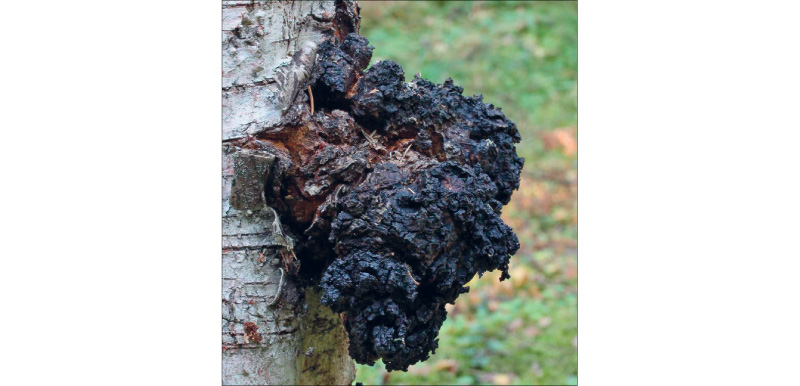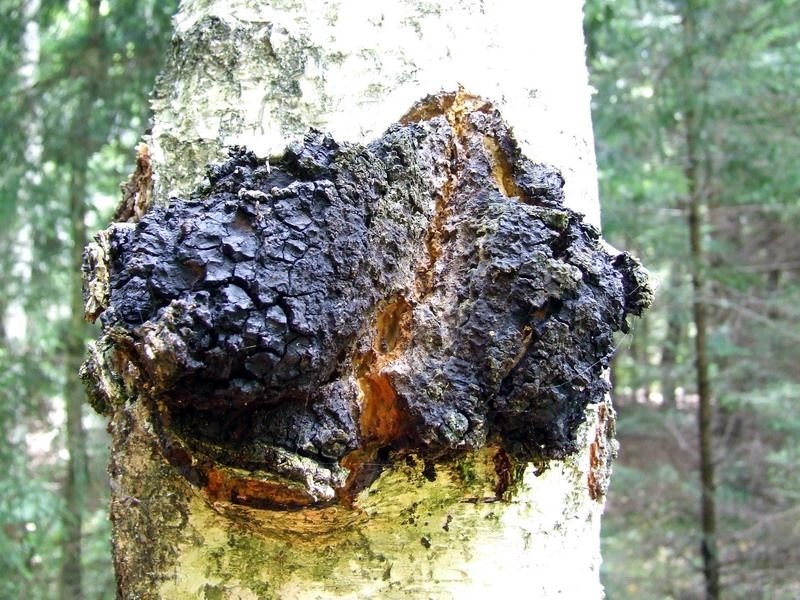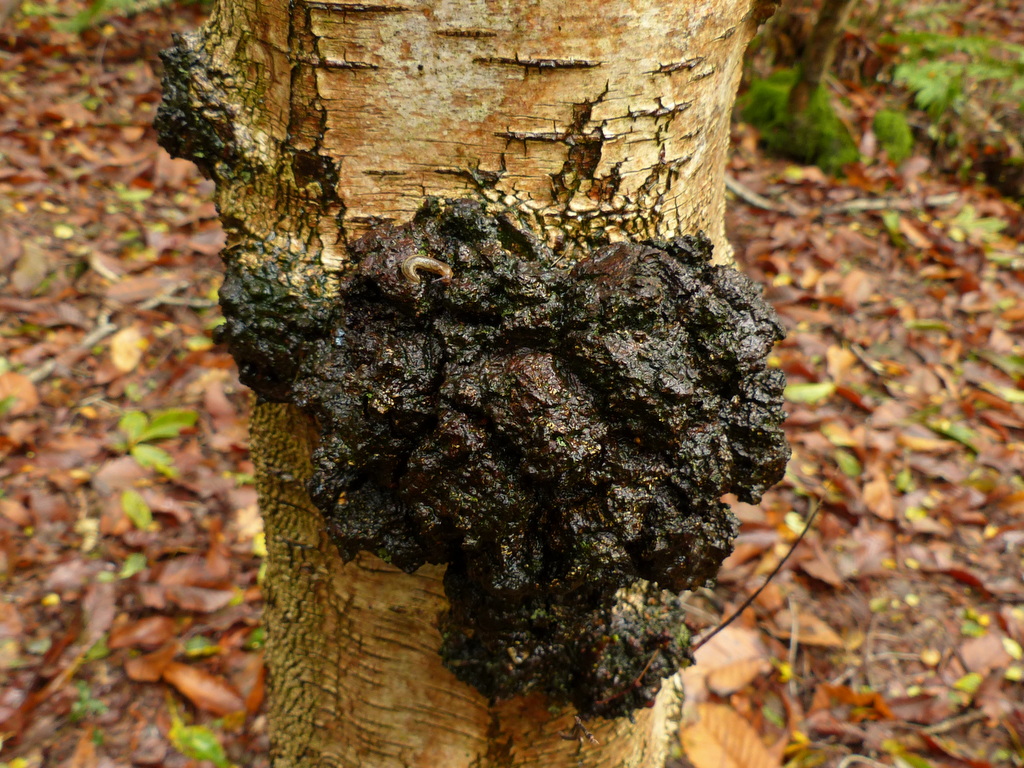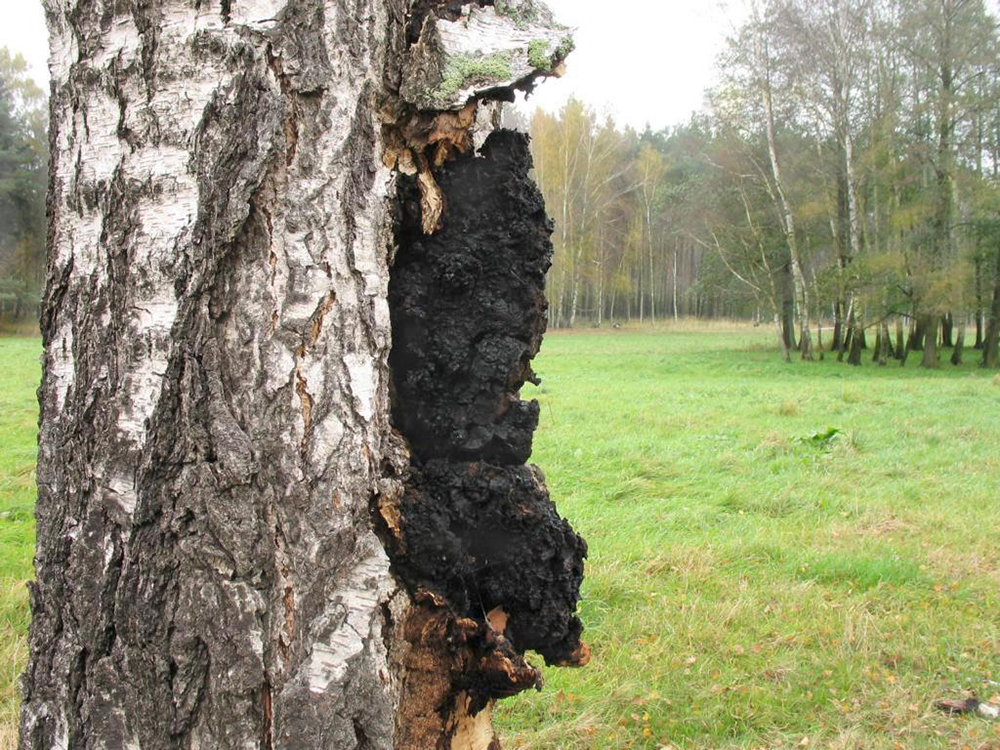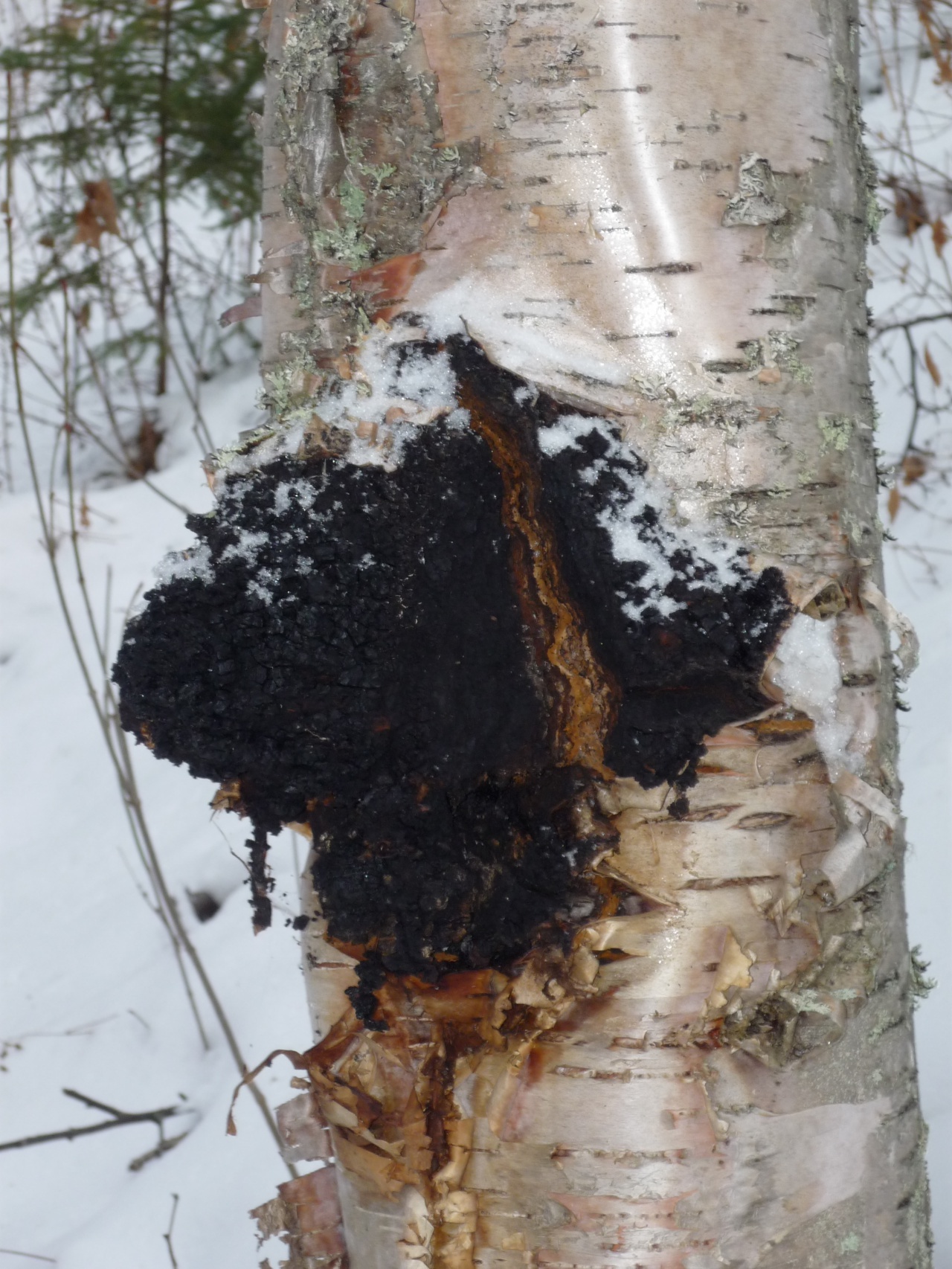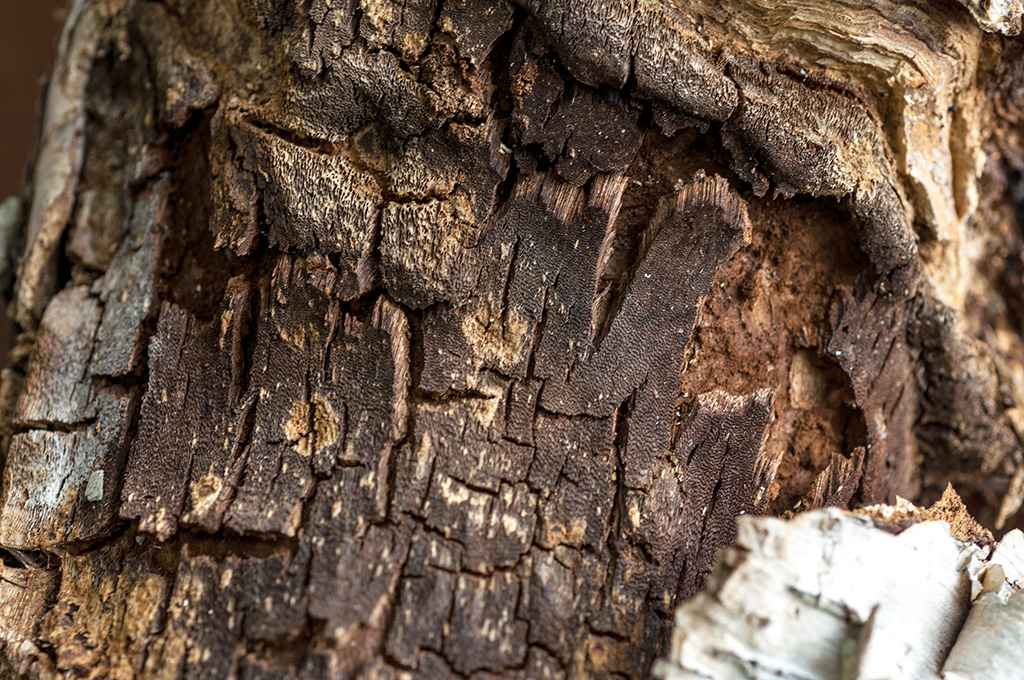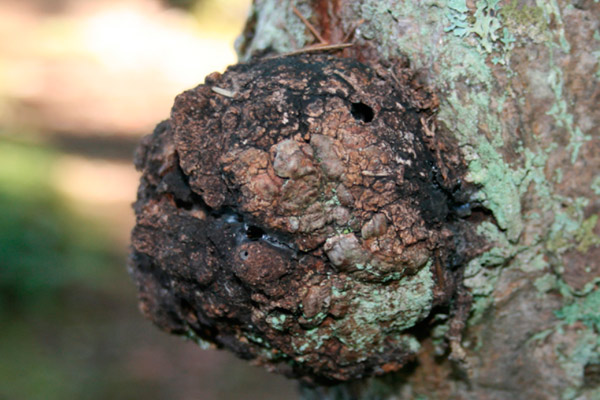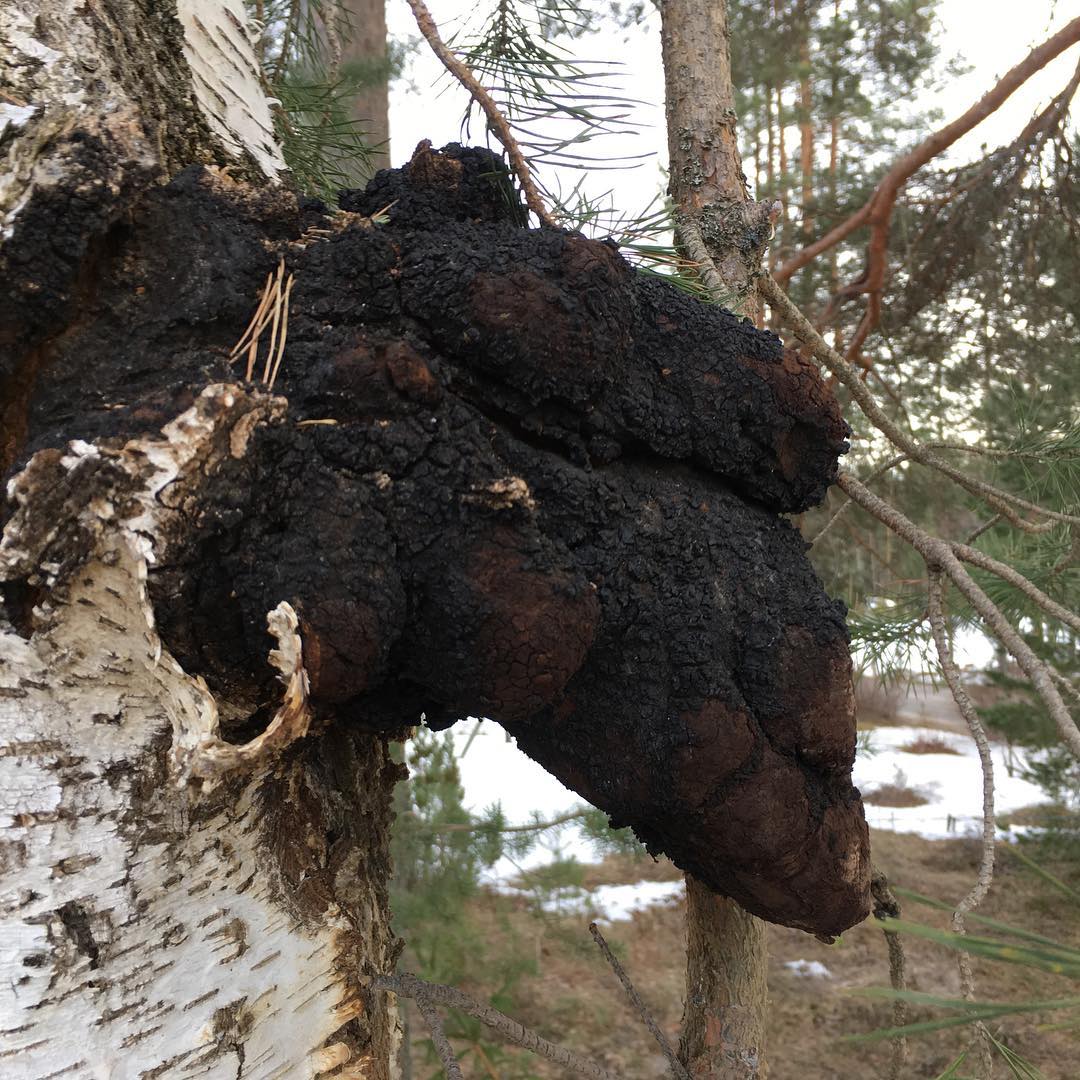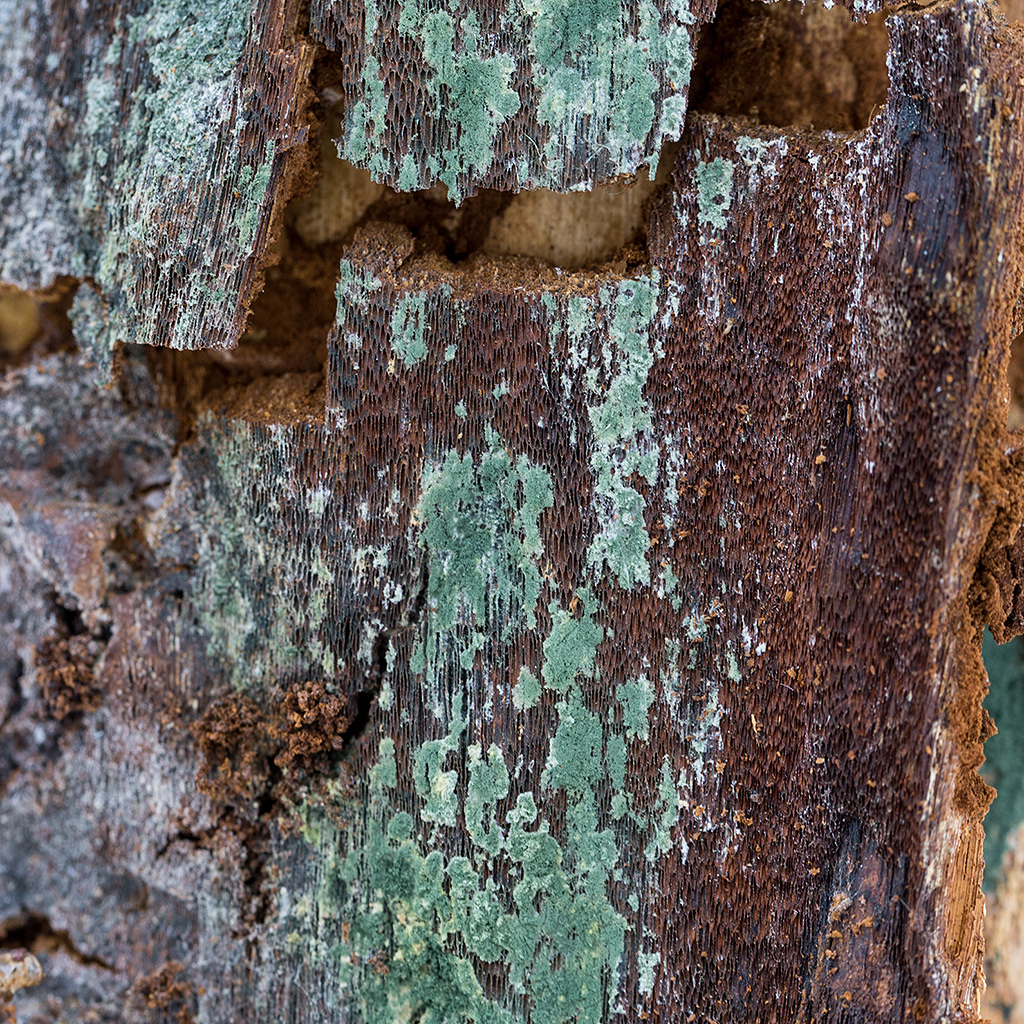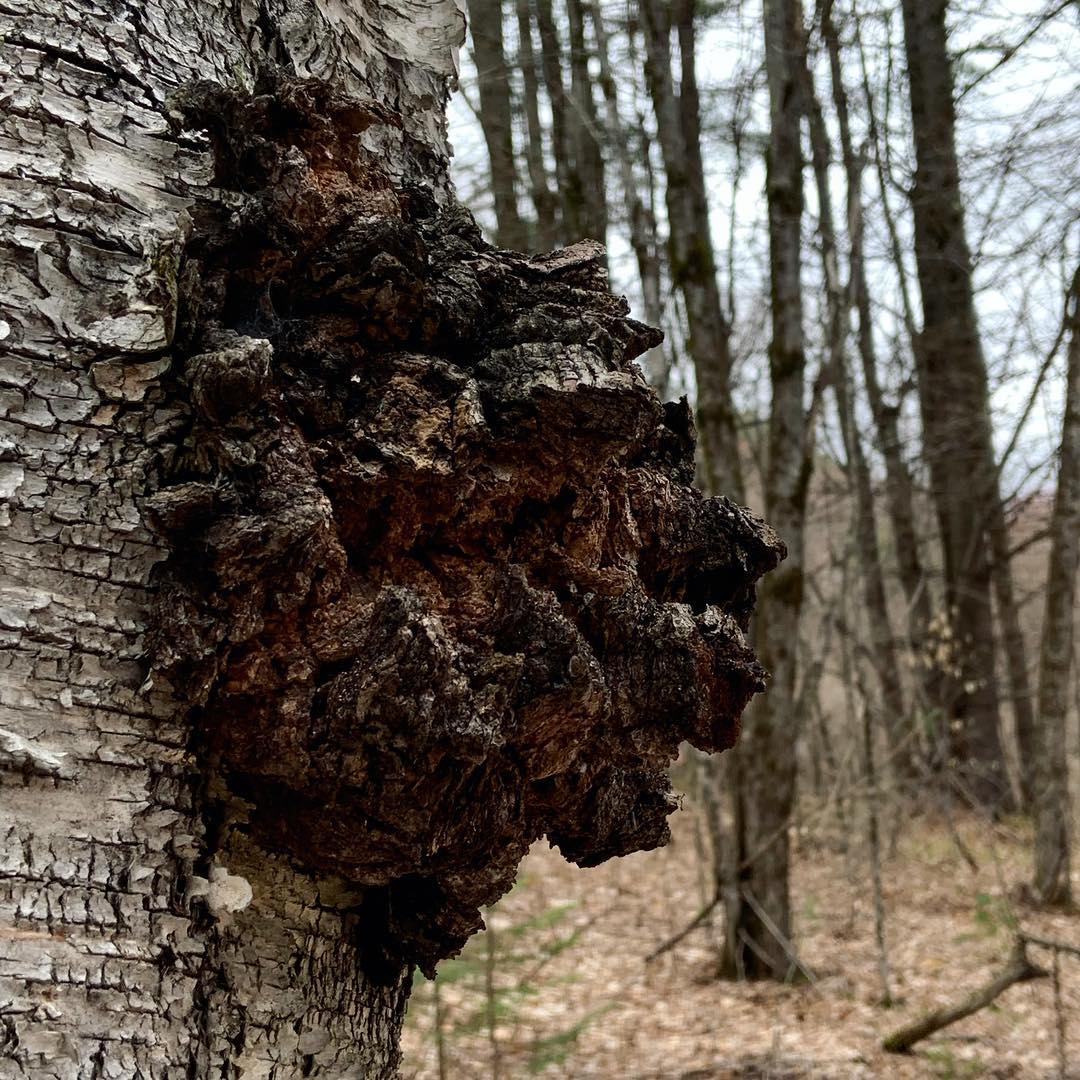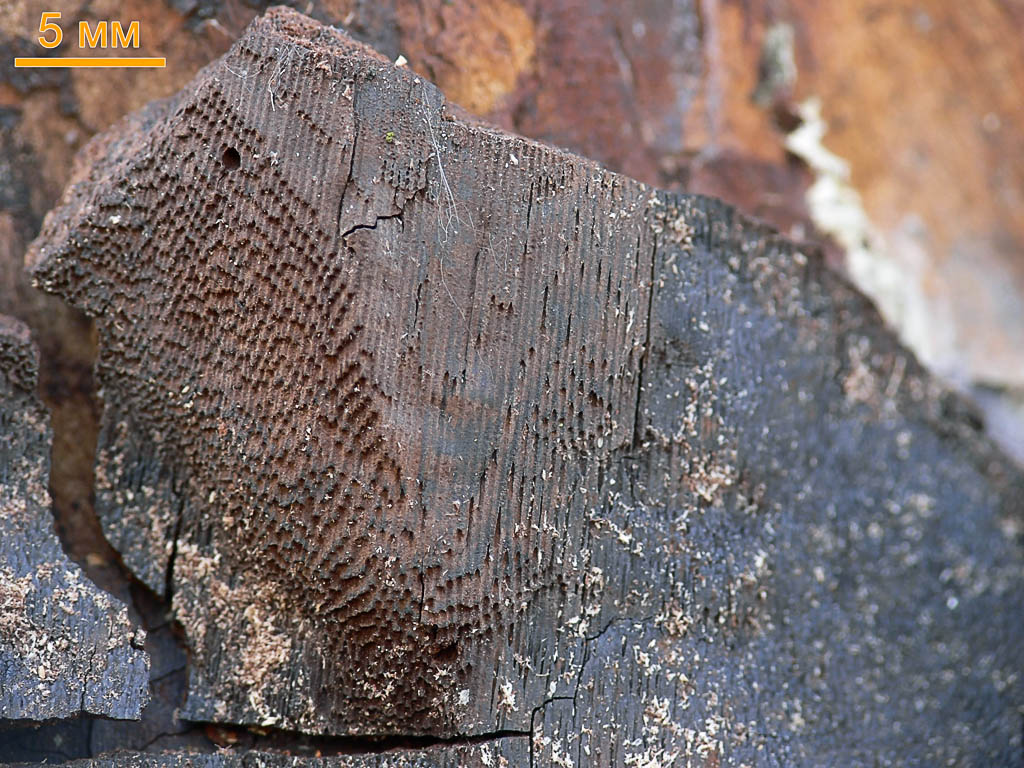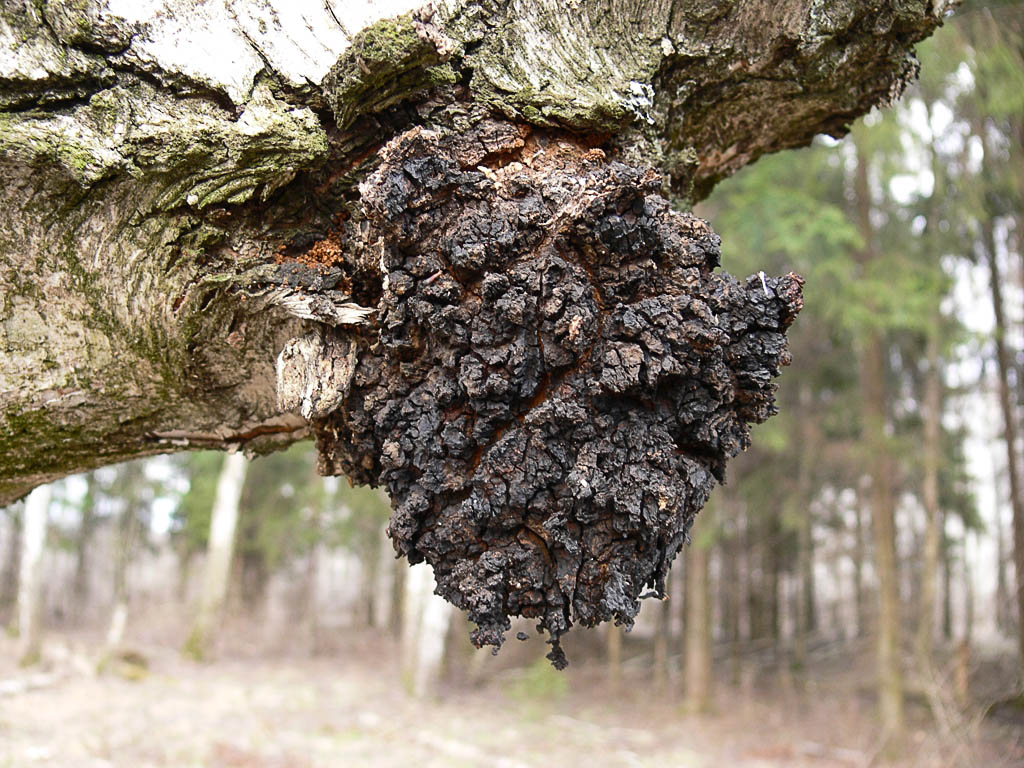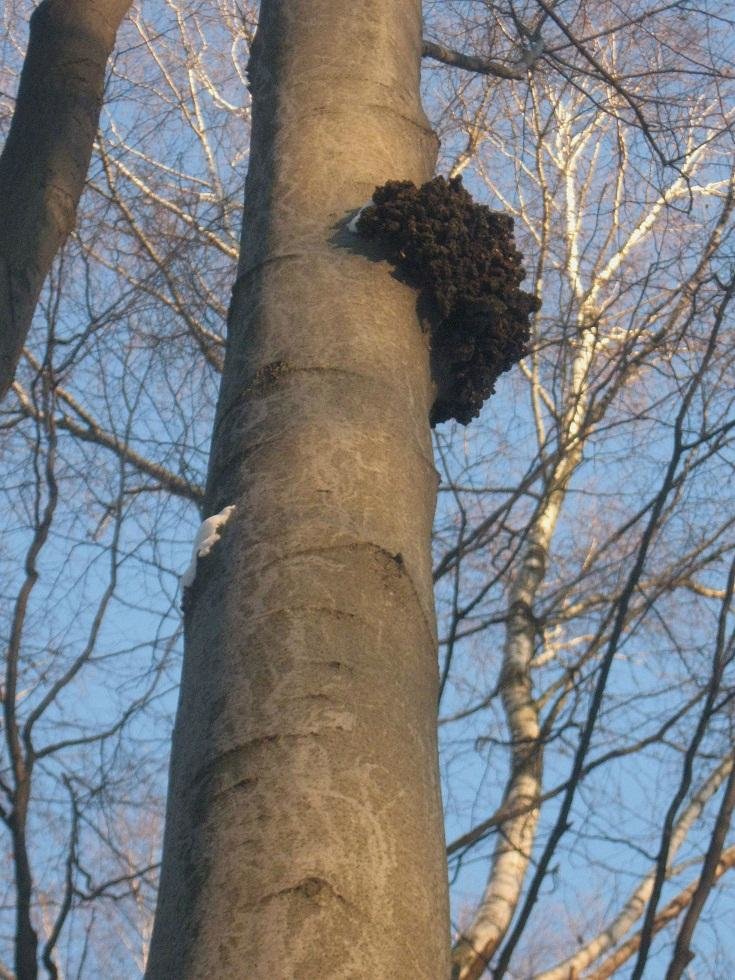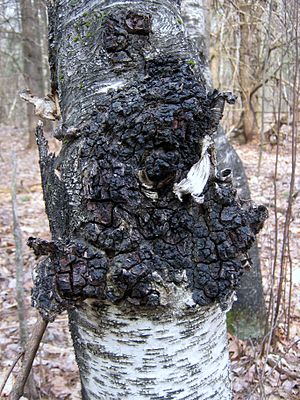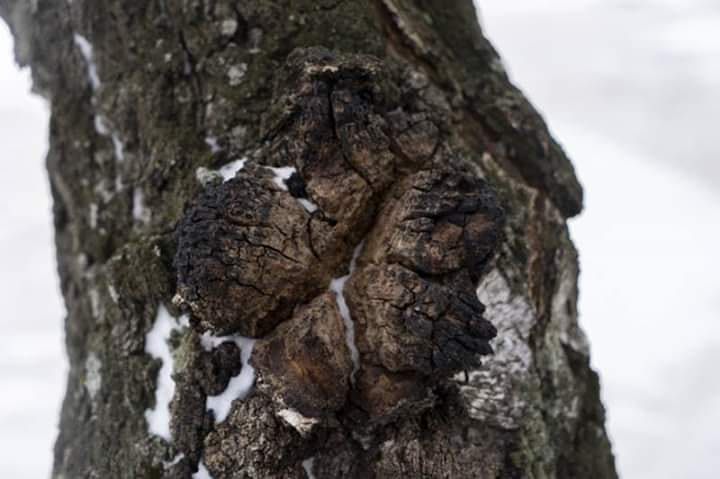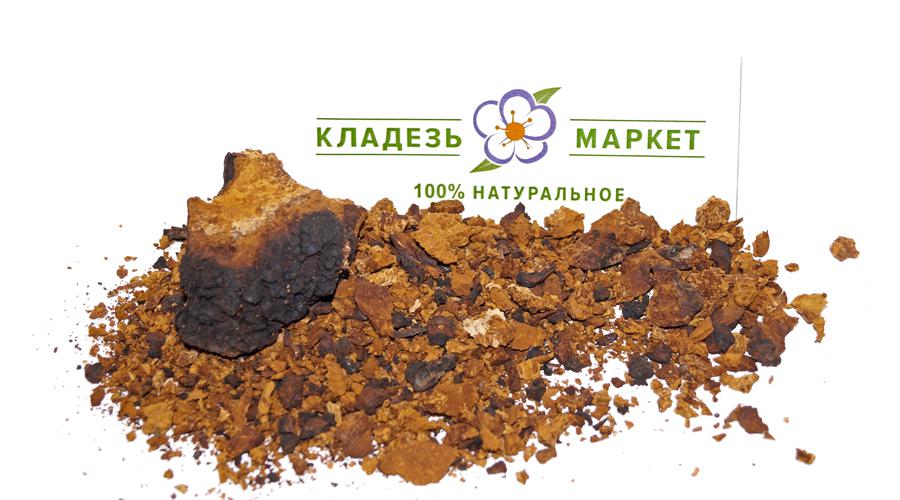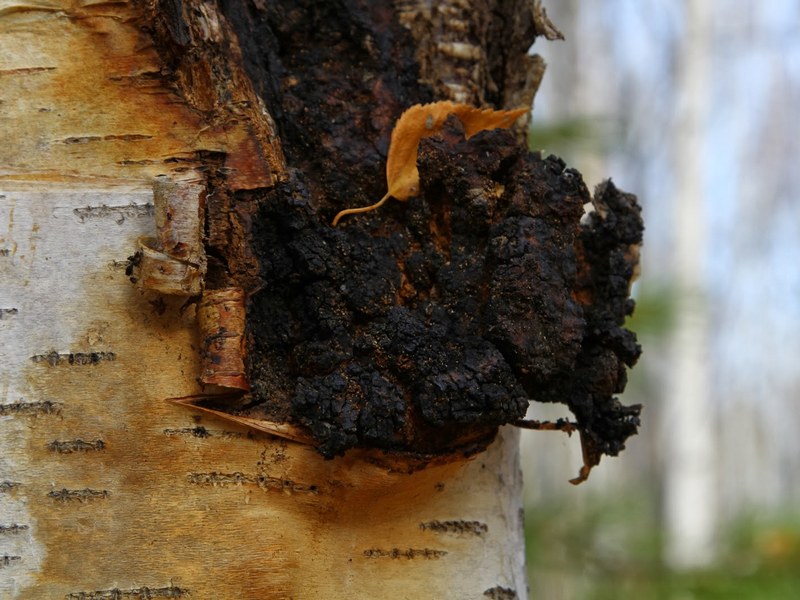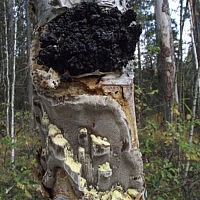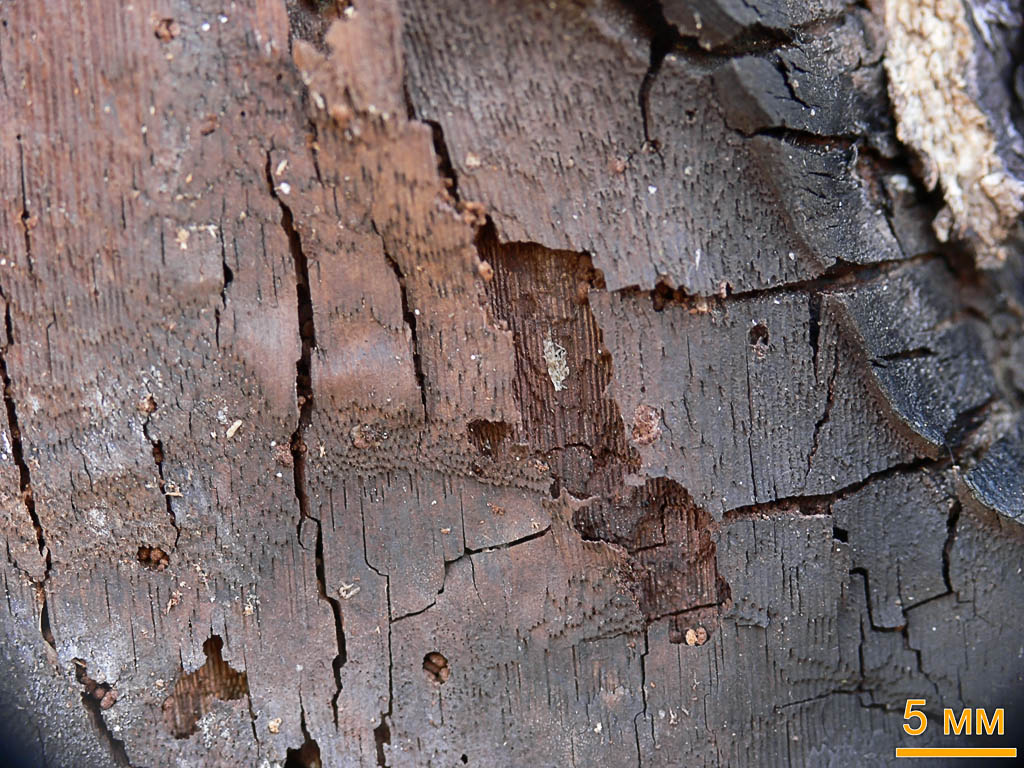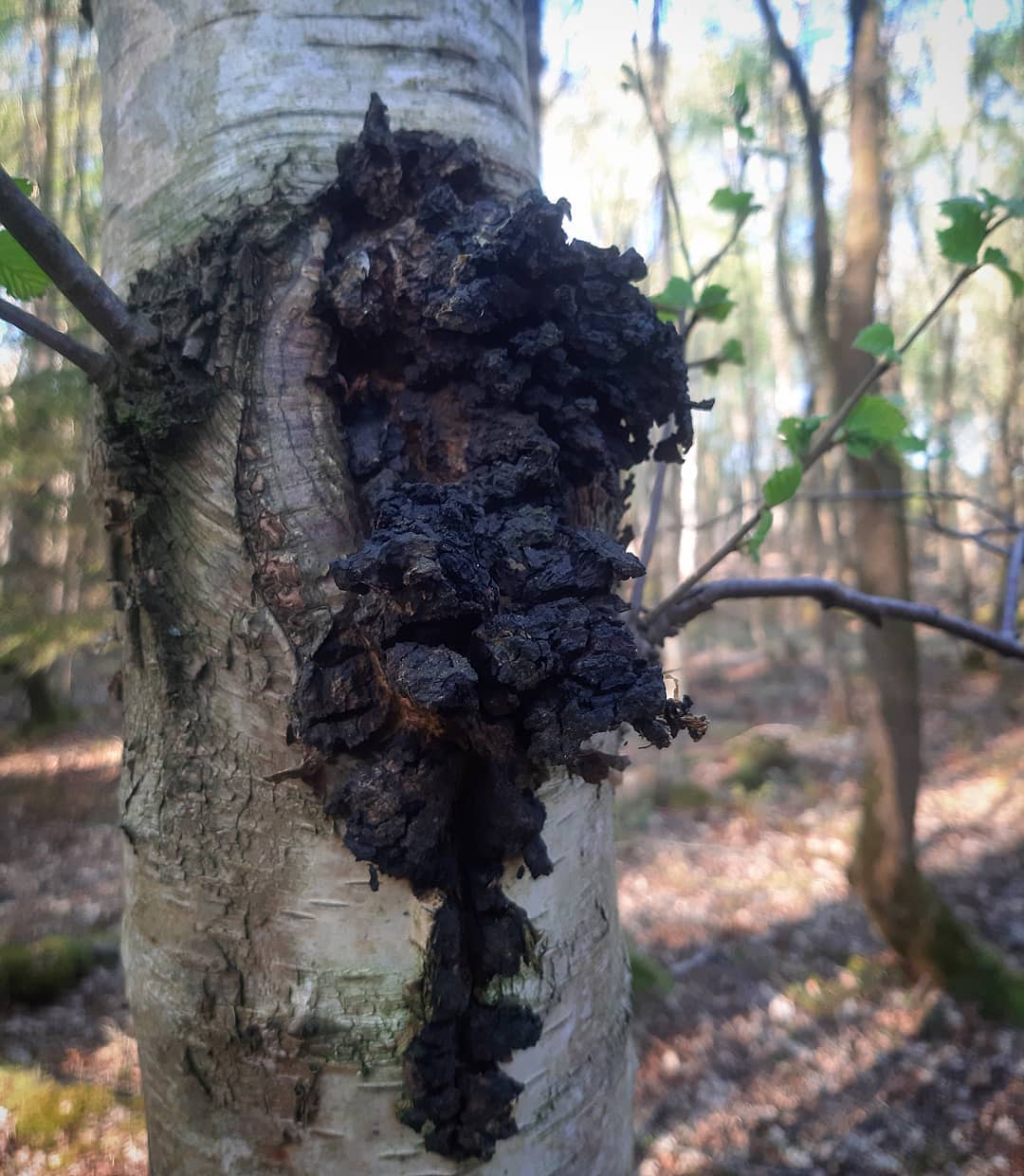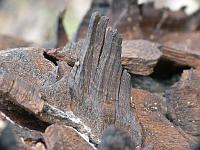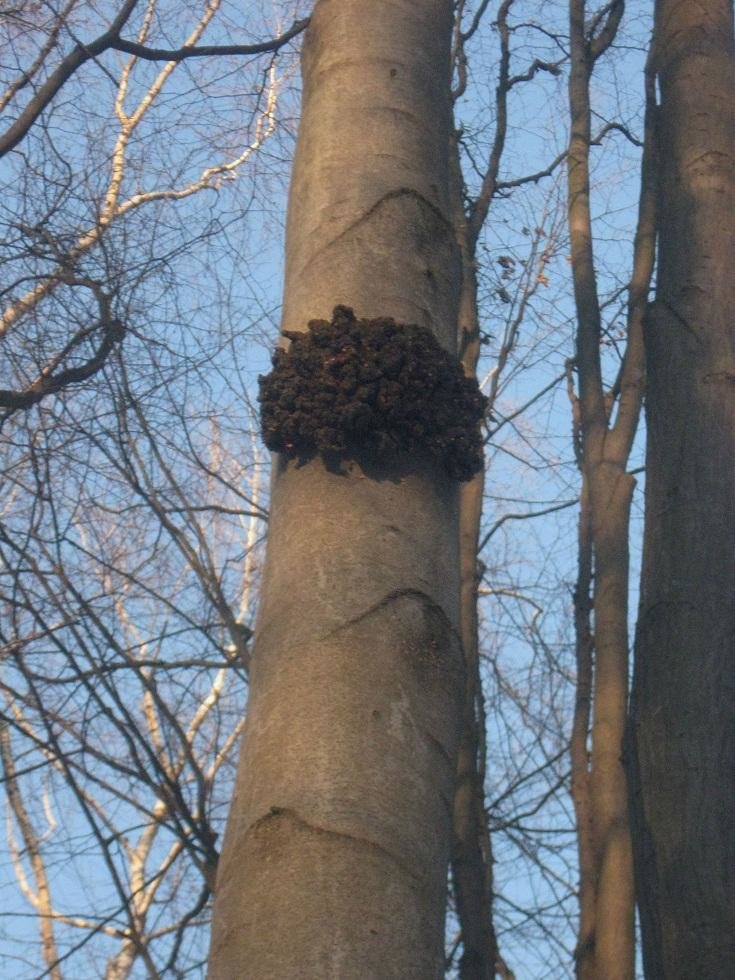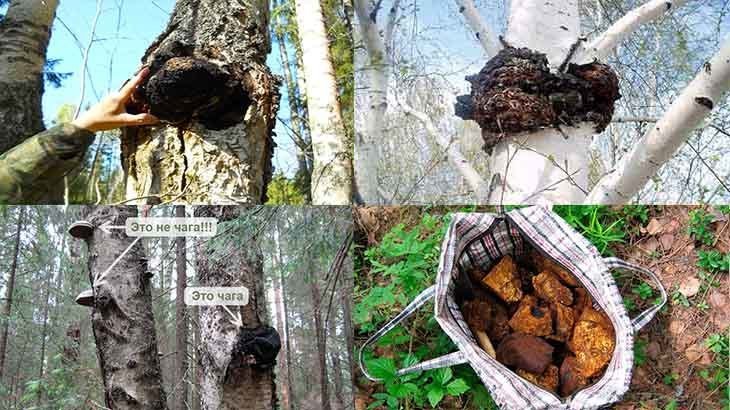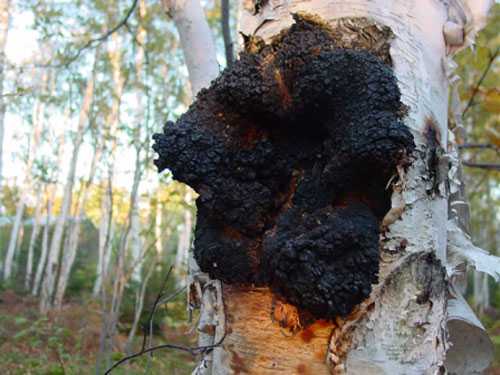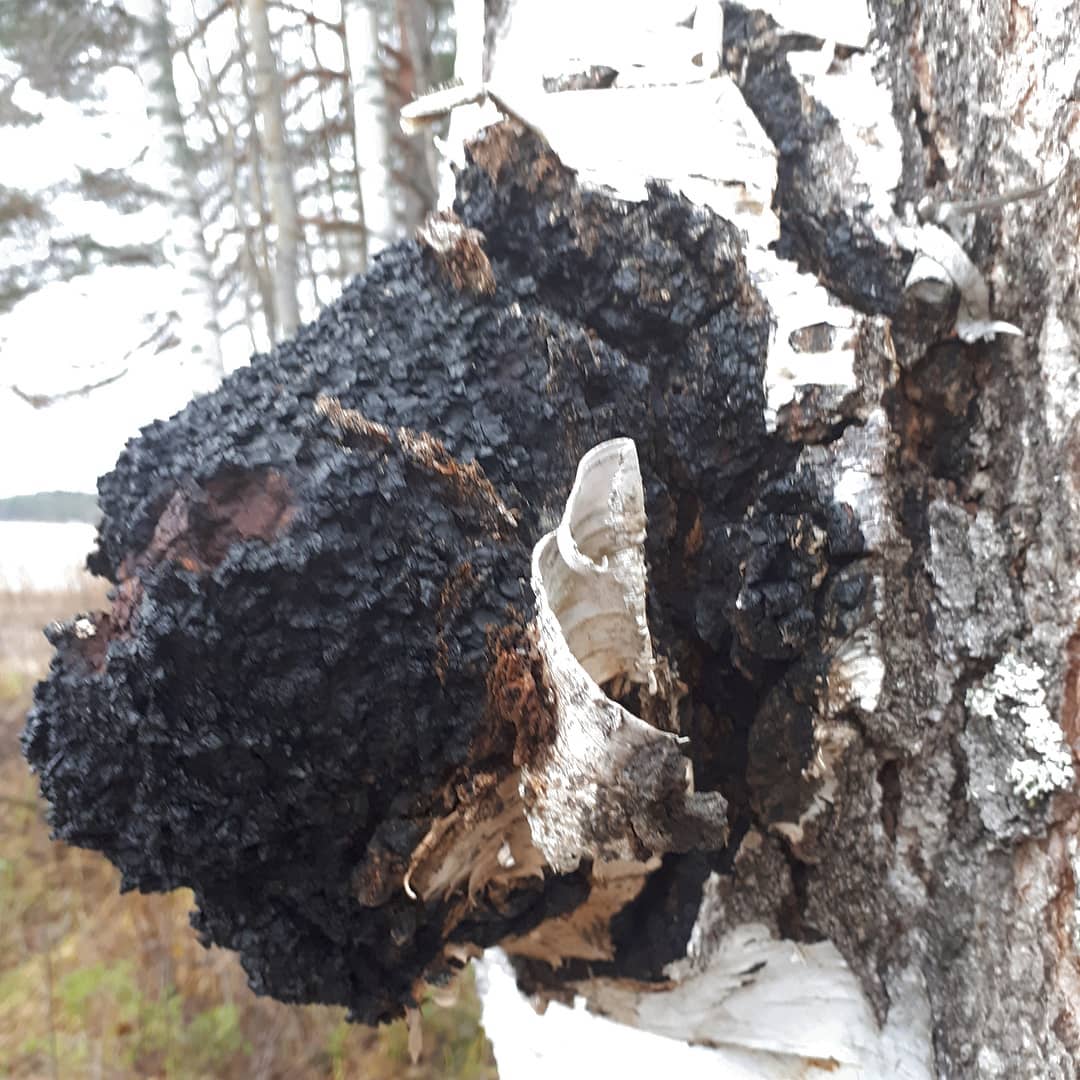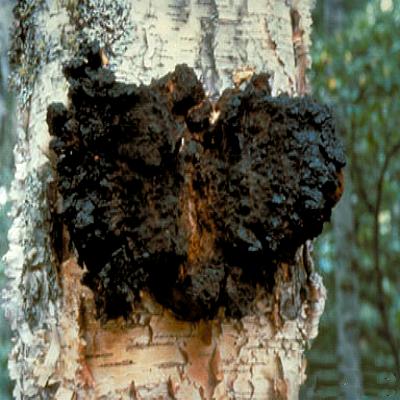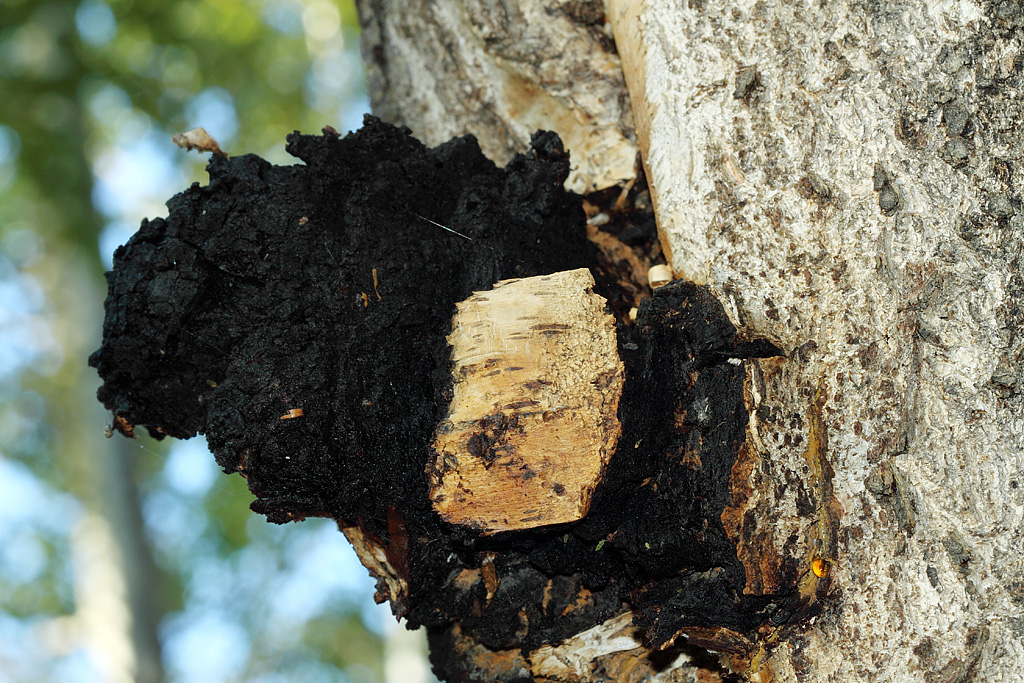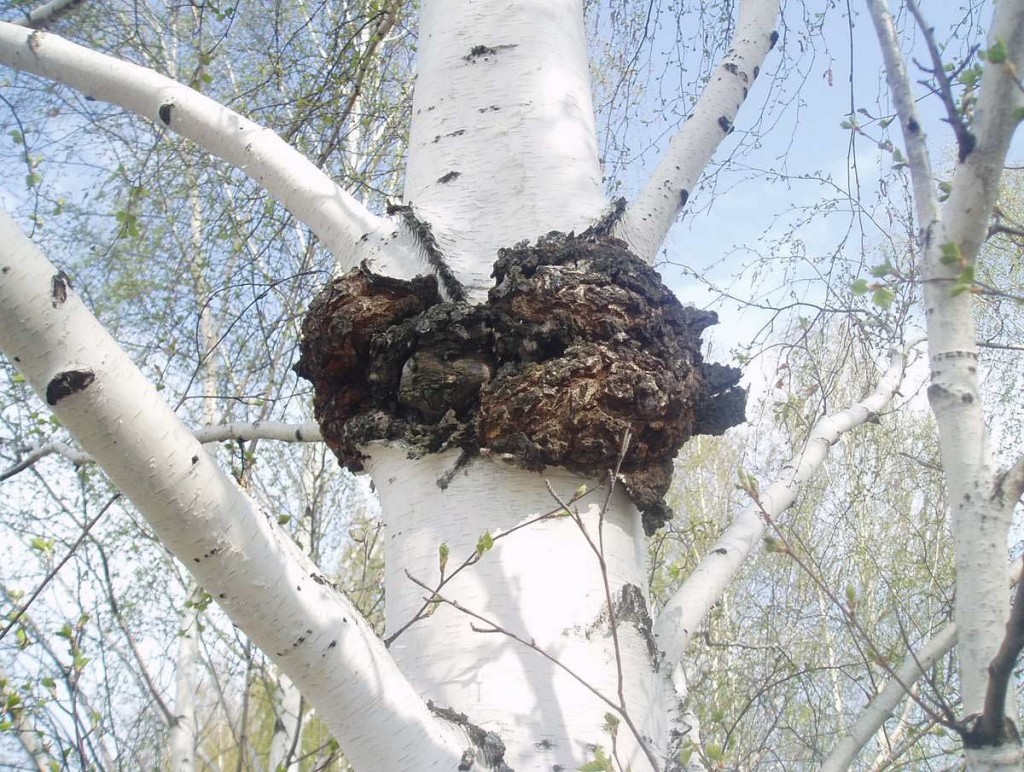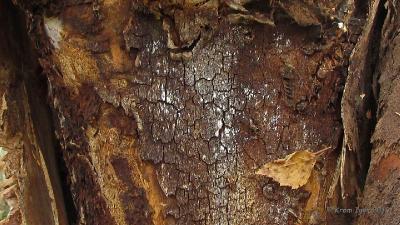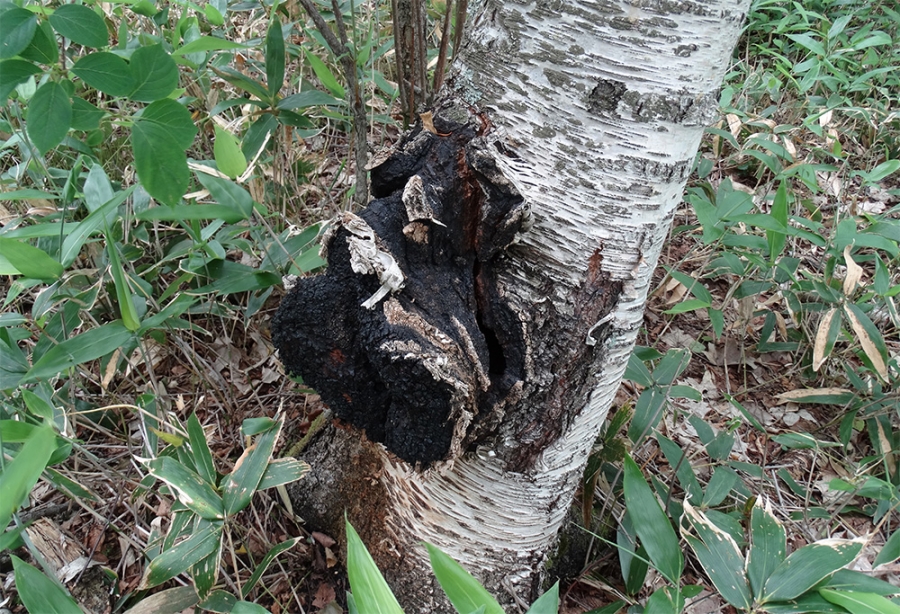Medicinal properties of bordered tinder fungus.
Pine polypores are used as raw materials for the manufacture of medicines used in homeopathy. Their medicinal properties have been known for a long time. Bordered polypores are used in the treatment of various diseases.

These mushrooms boost immunity and stimulate the brain. They are effective against viral diseases such as bronchitis, pleurisy, pneumonia, and tuberculosis. In addition, fringed polypores remove toxins from the body, enhancing its protective properties. These mushrooms are used in the treatment of intestinal and gastric diseases, as well as diarrhea and dysentery. Pine tinder tinctures can help lower sugar levels in people with diabetes.
The effectiveness of tinder fungi is also noted for problems with the heart, blood vessels, genitourinary system and liver. They help with inflammations of various natures. In addition, a variety of bordered polypore-based drugs reduce the risk of cancer and inhibit tumor growth.

Although wood sponge has many medicinal properties, care should be taken when using these mushrooms and strictly adhere to the recipe. Overdose may cause vomiting, dizziness, and swelling in the side
Cases of allergies and hallucinations have been reported.
Related species of bordered tinder fungus.
Tinder fungus is an inedible relative of the bordered tinder fungus. Its fruiting body is sessile, at first rounded, and later hoof-shaped, without a leg. The hat is large, matte, wavy, uneven, light gray or dark gray. The pulp is soft, but dense, resembling a sponge in structure. The color of the pulp is rusty brown.

True tinder fungi cause white rot on trees. As a result, the wood becomes brittle. This species is widespread. Inhabits birch, alder, beech, oak and aspen. Most often, true tinder fungi are found on stumps and dry, and living trees can become infected through damage in the bark.
Sulfur-yellow tinder fungus is a conditionally edible relative of the pine tinder fungus. At first, the fruit body looks like a fleshy yellowish mass, over time it hardens and takes on a fan-shaped shape. The mass of this mushroom can reach up to 10 kilograms. The color of the mushroom is creamy yellow, the surface is covered with a small fluff. The pulp is very juicy, brittle, white in color, sour in taste, with a lemon scent, which becomes unpleasant with old age, mousey.

Sulfur-yellow polypores are annual mushrooms. They settle on the trunks of living trees, being low. They destroy poplars, birches, lindens, willows, oaks, cedars. These fungi cause the development of red-brown rot. The heart part of the tree suffers predominantly. In Russia and Ukraine, sulfur-yellow tinder fungi bear fruit from May to September.
Scaly and varnished tinder fungi: photo and description
Scaly tinder fungus, motley, hare. The cap is 5-50 cm in diameter, 0.5-10 cm thick, whitish or creamy, with large pressed brown scales, making it variegated. The edge is usually more or less thin, often bent inward. Stem 4-8 × 1-4 cm, whitish-cream, almost black at the base. The tubular layer is white. The pulp is whitish, with a pleasant mealy smell and taste. Spore powder is white. Spores 10-14 × 4-5 (6) µm, oblong-ellipsoidal, smooth, colorless.
Growth. It grows on living and dead trunks and branches of fruit and broad-leaved trees.
Fruiting. June to September. Wound parasite. Having penetrated into the inner layers of the wood, the mycelium causes a yellowish-white internal rot.
Usage.Conditionally edible mushroom only at a young age (old mushrooms are tough).
Lacquered polypore. Basidiomas are annual or 2-3 years old with a cap and a leg. The cap is up to 25 cm in diameter and 1–3 cm thick, semicircular or kidney-shaped, covered with a shiny, lacquered, reddish, then reddish-purple, dark red or chestnut-brown and, finally, almost black crust. Leg up to 15 × 1–2 cm, sometimes short, eccentric, less often lateral, covered with the same crust as the cap, one color with the cap or almost black. The tubules are 0.5–2 cm long, ocher, with small and rounded pores.
As you can see in the photo, in the lacquered tinder fungus, the surface of the tubular layer is whitish, creamy, then turns brown, when pressed, it darkens:
The pulp is spongy-corky, hardening, white or light reddish. The hyphalous system is trimic. Spores 8-13x5.5-7.5 µm, ovoid or almost oval, truncated at the apex, warty.
The area where this tinder fungus grows in Russia is very wide. It is distributed in the Far East (Primorsky and Khabarovsk Territories, Jewish Autonomous, Amur, Sakhalin, Magadan and Kamchatka Regions), in the European part, in the Urals, in Siberia; outside Russia - in Europe, Asia, North Africa, North America.
Grows in deciduous, mixed and coniferous forests on stumps and deadwood of spruce, fir, larch, birch, in July - August, in small groups and singularly. The mushroom has medicinal properties. Grown in culture for food and medicinal purposes, maintained in pure culture in collections in many countries of the world, as well as in Russia.
Limiting factors. Human economic activity, leading to the removal of deadwood, deforestation, forest fires.
Below is another selection of photos of tinder fungi with a description.
External description
The fruit body of the mown tinder fungus goes through several stages of development. At the first stage of growth, the birch mushroom is an outgrowth on the trunk of a tree, with sizes from 5 to 20 (sometimes up to 30) cm. The shape of the outgrowth is irregular, hemispherical, having a black-brown or black surface covered with cracks, tubercles and roughness. An interesting fact is that mown tinder fungi grow only on living, developing trees, but this fungus stops growing on dead tree trunks. From this moment, the second stage of development of the fruiting body begins. On the opposite side of the dead tree trunk, a prostrate fruit body begins its development, which initially has the appearance of a filmy and lobed mushroom, having a width of no more than 30-40 cm and a length of up to 3 m.The hymenophore of this fungus is tubular, the edges of the fruit body are characterized by brown-brown or woody, tucked up. The hymenophore tubes are inclined at an angle of about 30 ºC during their growth. As it ripens, the birch mushroom destroys the bark of a dead tree, and after the mushroom pores are sprayed, the fruit body becomes dark and gradually dries up.
The mushroom flesh of the cut tinder fungus is woody and very dense, characterized by a brownish or dark brown color. Whitish streaks are clearly visible on it, the pulp has no smell, but the taste when boiled is astringent, tart. Directly at the fruiting body, the pulp has a woody color and a small thickness, covered with a skin. In ripe mushrooms, it becomes dark.
Lentinula edodes L1-³Ñ,)
Lentinula edodes
Open and close. Bumpy flare. Hearth, hearth, hearth, AHCC (heart, hearth, heart Burgundy . Bumpy lineBurgundy - bark, bark, bump, bump, bump ° ÑÐμÑÑвÐμ внÑÑÑивÐμнного пÑоÑивоÑÐ ° кового Ð »ÐμкР° ÑÑÑвÐμнного ÑÑÐμÐ'ÑÑвР°, оР± л Ð ° Ð'Ð ° ÑÑÐμго пÑоÑивоопÑÑоР»ÐμвÑми ÑвойÑÑвР° ми. Burgundy Burgundy
Tinder fungus sulfur-yellow and birch
Tinder fungus is sulfur-yellow. Fruit bodies 6-30 cm wide, first thick pineal, then semicircular or fan-shaped, tiled, adherent sideways, fleshy, juicy, later dry and brittle, sulfur-yellow in youth, later yellow-orange, and finally ocher. The light yellow or pale ocher surface of the cap is covered with brown scales. On the underside of the cap, angular and elongated, rather large pores of the hymenophore. The tubular layer below is represented by small sulfur-yellow, later yellow-ocher pores. The pulp of young sulfur-yellow tinder fungi is soft, juicy, brittle, white. The smell is weak, in old tinder fungi it is unpleasant, in young mushrooms it is lemon, the taste is sour.
It grows on the trunks and stumps of deciduous and coniferous trees. Bears fruit in spring.
Birch polypore. Fruit bodies 4–20 cm in diameter, convex to almost flattened, 2–6 cm thick. The crust of young fruiting bodies is whitish, later gray, yellowish or pale brown. The fabric is white. The layer of tubules is separated from the tissue. The surface of the hymenophore is white, subsequently slightly brown. The spore powder of the birch fungus is white. Spores 4.5-6 x 1.2-1.5 µm, cylindrical, smooth, colorless.
Growth. Grows on dead, rarely living, birches.
Fruiting. July to December.
This is one of those tinder fungi that cause a yellowish-brown or reddish-brown rot of a destructive type, which develops intensively. The wood struck by this tinder fungus quickly collapses and becomes rotten. When infected, rotting first develops in the bark and sapwood, and from there quickly penetrates to the center of the trunk; mushroom caps develop in the last stages of wood decay. In the initial stages of the lesion on cross cuts, rot appears in the form of a complete or incomplete peripheral ring of wood with a reddish tint, gradually turning into reddish brown or yellowish brown. Subsequently, cracks in the radial and tangential directions are noticed on the affected wood.
Ganoderma lucidum Lol lol lokl, (b)
Ganoderma lucidum
Burgundy, burgundy, burgundy, burgundy . Burgundy and burgundy ,,. Donut, donut, donut Burgundy, burgundy, burgundy Fix.
Bump, bump, bump, bump, bump, bump Burgundy - baptismal bark: baptismal
Rhodotus palmatus (Rhodotus palmatus)
Other names
- Dendrosarcus subpalmatus;
- Pleurotus subpalmatus;
- Gyrophila palmata;
- Rhodotus subpalmatus.
The palm-shaped Rhodotus is the only member of the genus Rhodotus, belonging to the Physalacriaceae family, and has a rather specific appearance. The pink or pinkish-orange cap of this fungus in mature fruiting bodies is densely speckled with a venous mesh. Because of this appearance, the described mushroom is often called a shriveled peach. The fruity aroma of the mushroom pulp contributed to the emergence of this name to some extent. The palatability of the palm-shaped rhodotus is not very good, the pulp is very bitter, elastic.
External description
The fruiting body of the palm-shaped rhodotus is hat-pectus. The mushroom cap has a diameter of 3-15 cm, a convex shape and a curved edge, very elastic, initially with a smooth surface, and in old mushrooms it is covered with a wrinkled venous mesh. Only sometimes the surface of the cap of this mushroom remains unchanged. The mesh appearing on the cap of the mushroom is slightly lighter in color than the rest of the surface, while the color of the cap between the wrinkled scars may change. The color of the surface will depend on how intense the lighting was during the development of the fruiting body of the fungus. It can be orange, salmon or pink. In young mushrooms, the fruiting body can secrete droplets of reddish liquid.
The leg of the mushroom is located in the center, more often - eccentric, has a length of 1-7 cm, and in diameter is 0.3-1.5 cm, sometimes hollow, the flesh of the leg is very hard, has a small edge on its surface, pinkish, but without a volva and a peri-cap ring ... The length of the leg will depend on how high-quality the illumination of the fruiting body was during the period of its development.
The mushroom flesh of the palm-shaped rhodotus is elastic, has a jelly-like layer located under the thin skin of the cap, a bitter taste and a barely pronounced fruity aroma, reminiscent of the smell of citrus fruits or apricots. When interacting with iron salts, the color of the pulp immediately changes, becoming dark green.
The hymenophore of the described fungus is lamellar. Elements of the hymenophore - plates, located freely, can be creeping along the stem of the fungus or notched-attached. Often they have an abdomen, greater thickness and frequency of location. Moreover, large plates of the hymenophore are often interspersed with small and thin ones. According to the color of the plate of the described fungus, they are pale-salmon-pink, some of them do not reach the edge of the cap and the base of the leg. Fungal spores are 5.5-7 * 5-7 (8) microns in size. Their surface is covered with warts, and the spores themselves are often spherical.
Season and habitat of the mushroom
Rhodotus palmatus belongs to the saprotroph category. He prefers to live mainly on stumps and trunks of deciduous trees. Occurs singly or in small groups, mainly on elm fallen trees. There is information about the growth of the described species of mushrooms on the wood of maple, American linden, horse chestnut. Griyu rhodotus palmate is widespread in many European countries, in Asia, North America, New Zealand, Africa. In mixed coniferous and deciduous forests, such mushrooms can be seen very rarely. Active fruiting of the palm-shaped rhodotus occurs from spring to late autumn.
Edibility
The palm-shaped rhodotus (Rhodotus palmatus) is inedible. In general, its nutritional properties have been little studied, but too hard pulp does not allow eating this mushroom. Actually, these properties of the pulp make the described type of mushrooms inedible.
Similar types and differences from them
The palm-shaped rhodotus has a rather specific appearance. The cap in young mushrooms of this species is pinkish, and in mature ones it is orange-pink, and on its surface, a net of thin and closely intertwined veins characteristic of this species is almost always visible.Such signs do not allow the described mushroom to be confused with any other, moreover, the pulp of the fruiting body has a clearly distinguishable fruity aroma.
Other information about the mushroom
Despite the fact that the Rhodotus palmate belongs to the number of inedible mushrooms, it has some medicinal properties. They were discovered in 2000 by a group of Spanish microbiologists. Research has confirmed that this type of fungus has good antimicrobial activity against human pathogens.
Rhodotus palmatus is included in the Red Book of several countries (Austria, Estonia, Romania, Poland, Norway, Germany, Sweden, Slovakia).
White mushroom. Borovik - white mushroom
The mushroom kingdom has its own king - the Borovik mushroom or the White mushroom. He received this title for a reason. Compared to other mushrooms, Borovik stands out due to its size and taste. It also contains many vitamins and nutrients. Every mushroom picker is happy to find such a mushroom "treasure" in the forest.
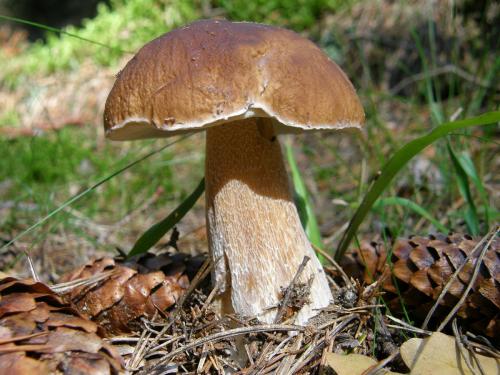
The Boletus mushroom grows in almost every forest on the planet, except Australia. He prefers the neighborhood of pines, fir trees, birches and oaks.
Description of the Borovik mushroom
Boletus is difficult to confuse with other mushrooms due to its size. His hat grows in diameter from 7 to 30 cm, has a pillow shape, and is smooth or velvet to the touch. The color of the cap depends on the variety and the environment: lemon yellow, orange, reddish brown or purple. The leg reaches a length of 20 centimeters or more, has a thickening in the middle and below. Its fibrous surface is flat or scaly. The inside is white or lemon-colored, and on the cut it is blue, red or white.
There are several times more nutrients in Borovik than in meat and even more than in fish. The mushroom helps the digestive system and increases appetite. It also helps to fight many diseases, thanks to the presence of a large amount of vitamins.
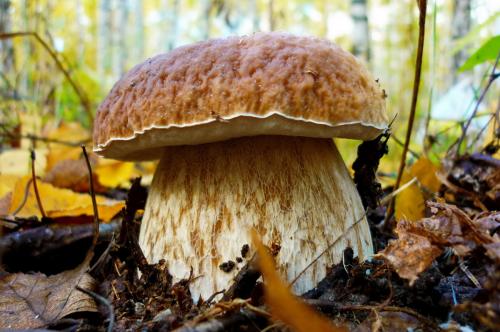
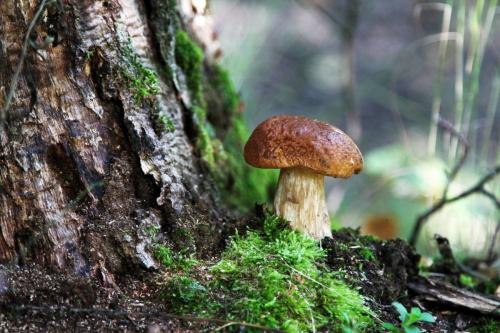
What does it look like? Instructions for grade 3 children
Despite the fact that the Borovik mushroom most often has a yellow leg and a brownish cap, it is also called White. This is because if you break the mushroom, then inside it will be snow-white. It is worth remembering that the color of the fungus can vary depending on the age and species.
- Bronze Borovik grows in mixed forests in southern Russia, where there are pine trees. The mushroom is not large in height, about 12 cm. The leg is bronze in color, the cap is dark, almost black, up to 17 cm in diameter. It is rare and grows singly.
- Boletus reticulated or White oak mushroom may appear in May. You need to look for it in mountainous areas under an oak tree, less often under a beech or chestnut tree. Borovik got its name because of the hat, which cracks over time and becomes covered with a pattern similar to a grid. The hat is convex in a light brown shade.
- Girlish Borovik has a velvety brown-yellow or red-brown hat, then it becomes smooth. The leg is shaped like a mace and is covered with a net that disappears with growth.
- Maiden Boletus grows in mixed forests. Prefers the neighborhood of firs, calcareous soil and a moderately warm climate.
- Bicolor Boletus grows in North America. The hat and the bottom of the leg are pink, and the top is yellow.
- White mushroom is a famous and widespread type of Borovik. Grows under conifers and birches. The brown cap grows up to 30 cm. The leg is light up to 10 cm. In height. The surface of the mushroom is dry, but becomes shiny after rain.
Properties and uses of chaga
text_fieldstext_fieldsarrow_upward
Pharmacological properties of chaga
Chaga
- increases the body's defense reactions in the experiment,
- activates the metabolism in the brain tissue, which is manifested by an increase in the bioelectrical activity of the cerebral cortex.
- acts anti-inflammatory with
- internal and
- topical application.
In experimental studies of chaga
inhibits the growth of some tumors.
The use of chaga
enhances the cytostatic effects of cyclophosphamide.
Birch mushroom decoction
has a hypoglycemic effect: the maximum decrease in serum glucose levels is observed 1.5-3 hours after ingestion of the decoction. The sugar level drops by 15.8-29.9%.
It is noted that a decoction from the inner part of the mushroom gives a hypoglycemic effect, a decoction from the outer part does not possess this property.
The use of chaga
Chaga is used as
- fortifying and
- anti-inflammatory agent for diseases of the gastrointestinal tract and
- as a symptomatic remedy for tumors of various localization.
Chaga infusion is prescribed to patients
peptic ulcer of the stomach and duodenum.
Chaga
- quickly relieves pain and dyspeptic symptoms,
- normalizes bowel function,
- increases overall tone.
The positive effect of chaga on patients with gastrointestinal diseases is confirmed by X-ray data.
Infusion and tincture of chaga, "Befungin" is used for
- psoriasis,
- eczema
- and other skin diseases,
the treatment is especially effective in cases of a combination of a skin disease with various inflammatory diseases of the gastrointestinal tract, liver, and biliary system.
When treating chaga, the patient is recommended to eat mainly dairy and vegetable food, to limit the intake of meat and fats, exclude canned food, smoked meats, hot spices. It is also impossible to inject glucose intravenously and use penicillin.
Destruction of wood
Drying of trees in the foci of the root sponge
Rotting wood is the process of its decomposition and destruction by wood-destroying fungi using a specific set of enzymes (substances that convert complex organic compounds into water-soluble, easily digestible by the fungus).
The nature of the destruction depends on the type of fungus and its set of enzymes, the degree and sequence of its destruction of cell walls, changes in the chemical composition of wood pulp and its physical properties. There are destructive and corrosive types of decay.
In the destructive type, decomposition of cellulose and hemicellulose occurs, which are the main constituent part of the cell walls and provide mechanical strength and elasticity of wood tissues. The cell membranes are destroyed evenly, gradually, without the formation of large holes in them. The fungus affects the entire mass of wood. As a result, the entire volume of the wood decreases, numerous cracks appear in it. Subsequently, the wood disintegrates into prismatic pieces, becomes brittle, and is easily ground into powder. The color of the wood is also gradually changing. At first, it becomes reddish, later turns brown, and in the final stage it acquires a dark brown color. Rot of this type is caused by the Swiss tinder fungus, sulfur-yellow tinder fungus, bordered tinder fungus, larch sponge and birch sponge, etc.
With a corrosive type of decay, lignin (an organic compound that causes lignification of the cell walls) and partially the cellulose complex are destroyed. Some fungi simultaneously decompose lignin and cellulose, destroying groups of cells in separate places. In the affected wood, cavities appear in the form of pits and cells, filled with white undecomposed cellulose. White spots of cellulose on a brown wood background create a variegated rot color (variegated corrosive rot). Variegated corrosive rot is caused by a root sponge, a pine sponge and a sponge sponge, spruce butt tinder fungus and oak tree tinder fungus.
Corrosive rot from root sponge
Other types of fungi initially completely decompose lignin, and then cellulose and other polysaccharides are gradually destroyed. At the same time, in the final stage of decay, the affected wood brightens evenly or in stripes, acquires a white, light yellow or "marble" color (white corrosive rot). White corrosive rot is caused by autumn honey fungus, real tinder fungus, false tinder fungus, flat tinder fungus.
Root rot is the most dangerous for growing trees, causing them to weaken, dry out, and reduce resistance to wind.
In the case of a corrosive type of decay, not all of the wood mass is decomposed: individual groups of destroyed cells alternate with untouched areas of wood. Therefore, at different stages of wood destruction, rot acquires a pitted, pitted-fibrous, fibrous structure. The wood splits into fibers, crumbles, retains its viscosity, and its volume does not decrease.
Fruit bodies of the root sponge
Medicinal polypores
Tinder beveled
In Russia, the most famous medicinal tinder fungus is chaga, or mowed tinder fungus (Inonotus obliquus). There are a whole bunch of tales about him, and it is not easy to distinguish the truth from creative (idle) conjectures.
This fungus parasitizes mainly on birches, although it can settle on maple and elm. It actively destroys wood, mainly the core, bringing the tree to death, although this process is not fast. The fungus develops under the bark of the tree, causing white rot. It can also live on a dry trunk. Distributed within the forest zone where there are birches.
The mushroom is, in a way, strange. What is called chaga and is used in medicine is not the fruiting body, but the mycelium. It looks like an unpleasant sore on a tree, a black cracking growth, even as burnt. The fruit bodies themselves will appear when the tree dies, and will look like a brown likeness of lichens, only tubular.
Sometimes chaga is confused with burl - a tree growth on a birch. But burl is, in fact, a tumor of a tree, an overgrowth of layers of the wood itself, caused not by a fungus, but by other reasons. The cap looks more "lively".
Chaga has been used in folk medicine for a long time, due to its ability to increase immunity, delay the growth of certain tumors, normalize heart rate, reduce blood pressure and cope with diseases of the gastrointestinal tract.
It was also found that chaga activates the metabolism in the brain tissue, which is important for the elderly. It also lowers blood sugar and pulp extract has antiviral activity.
In Chinese medicine, chaga infusions are used as an antitumor (in complex treatment), reducing the effects of chemotherapy, antiviral (against AIDS and hepatitis C viruses), immunostimulating, antidiabetic.
In Japan, it is also used to treat nephritis, stomach ulcers, salt deposits in bone tissue, blood purification, and as a pain reliever.
The simplest application is an aqueous infusion of dried and powdered mushroom.
Chaga, or tinder fungus (Inonotus obliquus). stridvall
Larch tinder
Larch tinder fungus, larch sponge, or Russian mushroom (Fomitopsis officinalis) grows on conifers, mainly on Siberian, Daurian larch, can be found on cedar and fir. That is, it is common where these trees grow.
It destroys trees relatively slowly (conifers protect themselves more efficiently), and can grow for a long time. Record holders can live on a tree for 50 years or more. Accordingly, they reach large dimensions. This tinder fungus has a familiar hoof-like appearance.
It is known in places of growth no less than chaga, and has a fairly wide application. For medicinal purposes, young mushrooms are harvested, still soft, with white, not hardened pulp. Picking in late spring or early summer. Adult mushrooms become very hard and accumulate twice as much resinous substances as young ones.
Mushroom preparations improve liver function, help normalize metabolic processes, have sedative and antitumor properties. It is used externally as a hemostatic agent.
Larch tinder fungus, larch sponge, or Russian mushroom (Fomitopsis officinalis). Olga Kuznetsova
Tinder fungus multicolored
Among the medicinal tinder fungi there are also very photogenic ones, for example, the multi-colored tinder fungus (Trametes versicolor).A common mushroom that prefers to settle on old wood, rotten stumps of deciduous trees. Sometimes found on conifers. Aggressive to trees - spreads quickly and leads to the formation of pith rot. But handsome! Discovery, photo shoot and gathering are welcome.
Grows actively in summer and autumn, mainly in groups. The surface of the mushroom is multi-colored, velvety, it is difficult not to notice it. The pulp is light, thin with a pleasant smell.
The preparations of the multi-colored tinder fungus are used as an antipyretic and anti-inflammatory agent in the treatment of pulmonary diseases. Also, the mushroom is good for restoring and strengthening immunity, activates the functions of phagocytes. It is used for liver diseases, effective as an analgesic, medicine for osteoporosis.
In Chinese and Japanese medicine, it is actively used in the complex treatment of oncological diseases.
Tinder fungus (Trametes versicolor). MICK
Autumn honey agaric
Autumn honey fungus (Armillaria mellea) is the causative agent of white sapwood (peripheral) rot of roots and trunks. Currently, many researchers consider it not as a separate species of fungi, but as a complex of closely related species, differing in areas, morphological and biological features.
Many conifers and deciduous species, as well as fruit crops are affected. Often, honey fungus occurs as a saprotroph on dry, deadwood and stumps, but under certain conditions it turns into a parasitic way of life and infects living trees and shrubs, causing them to dry out.
Mushroom on the trunk
Autumn honey agaric is widespread in different categories of forest and urban plantings.
- External signs of the disease in conifers are manifested in the thinning of the crown, yellow-green, yellow-brown or brown color of the needles, the presence of cracks and resinification in the butt of the trunks.
- When deciduous species are affected, the crowns of diseased trees become openwork due to crushing of leaf blades. Premature fall of foliage is often observed, cracks form in the butt of the trunks, from which a mucous liquid sometimes flows out.
The characteristic modifications of the mycelium (mycelium) in the form of films and rhizomorphs and fruiting bodies (basidiomas) are reliable signs of autumn honey fungus.
White fan-shaped films form under the bark of thick roots and trunks, covering a significant part of their surface. At first they are thin, but over time they thicken, turn yellow, partially split and transform into rhizomorphs.
- Rhizomorphs develop under the bark of roots and trunks and on the surface of the roots.
- Subcrustal rhizomorphs have the appearance of dark brown, flat, branching cords.
- The outer rhizomorphs are dark brown, almost black, rounded in cross section, similar to the roots of higher plants. They spread up to 30 m and infect healthy roots. Outside rhizomorphs can also move from infected roots to healthy ones through the litter.
Rhizomorphs of the mushroom
The most active development and distribution of rhizomorphs occurs at high humidity and temperatures from +17 ° C to 25 ° C.
Fruiting bodies (basidiomas) of autumn honeydew have the appearance of annual caps on a central leg. Caps are convex or flat, often with a tubercle in the center, yellowish brown, grayish brown, covered with darker scales. The hymenophore is lamellar, white. Stem up to 10-15 cm long, slightly thickened at the base, light brown, fine-scaled, with a white fluffy ring under the cap. Fruiting bodies are formed in groups on old stumps, deadwood and dead wood trunks. In very rare cases, basidiomas can be found on the roots and at the base of the trunks of affected living trees.
Honey mushroom films
The basidiospores formed on the hymenophore plates are spread by air currents, rainwater, animals and infect stumps and roots. The most active formation of basidiospores, their scattering and infection occurs at the end of summer - in autumn in humid warm weather.
Autumn honey fungus affects woody plants, as a rule, against the background of their preliminary weakening caused by various unfavorable factors (weather conditions, damage by other diseases, damage by pests, industrial air and soil pollution, etc.).

